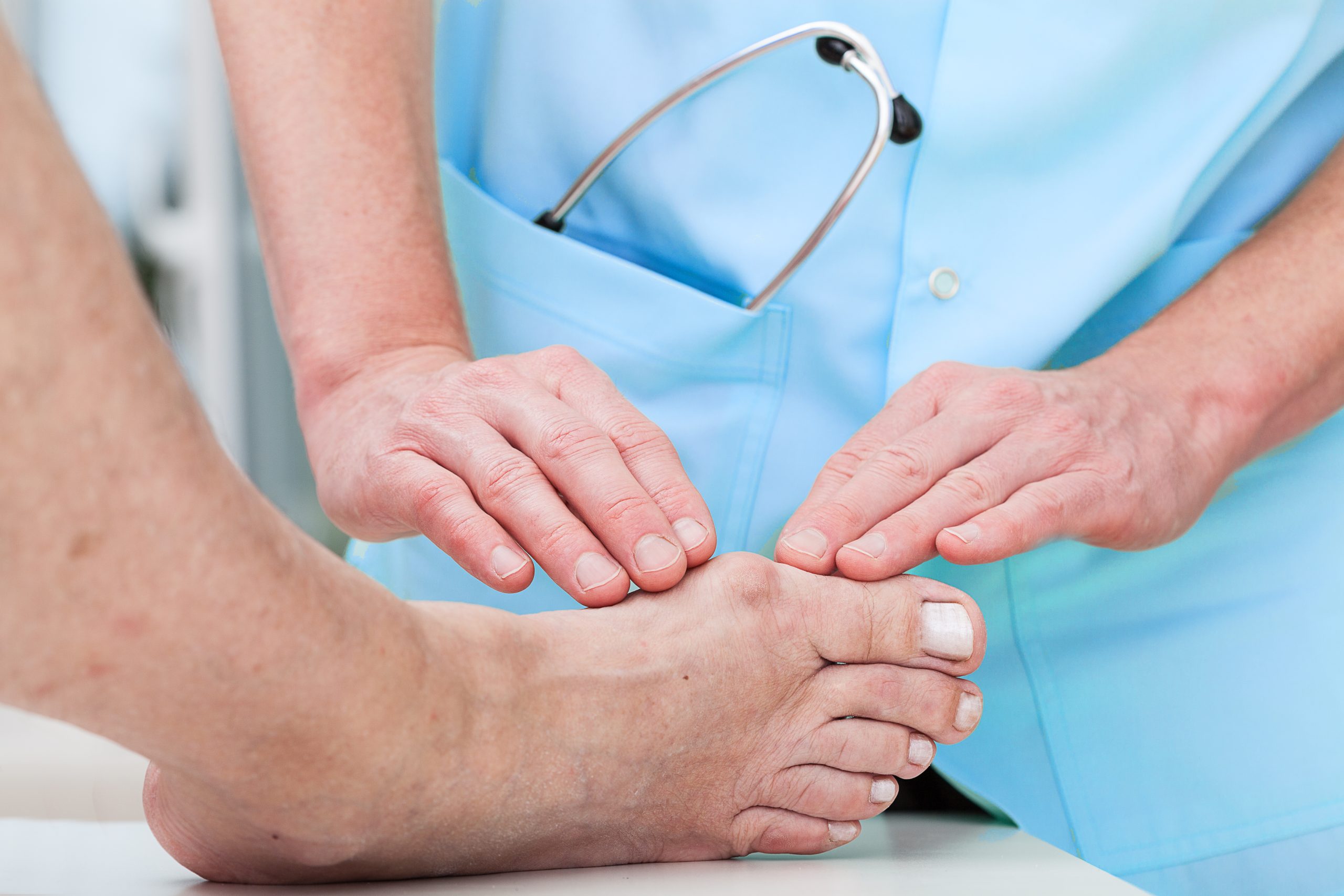Bunions can cause you discomfort and pain. They can impact your mobility and overall quality of life. When conservative measures fail to provide relief, you can consider bunion surgery.
In this article, we’ll explore everything you need to know about this procedure including its benefits and what to expect during recovery.
What is bunion surgery?
Bunion surgery, medically known as a bunionectomy, is a surgical procedure aimed at correcting a bunion, a bony bump that grows at the side of the big toe.
This condition often results from the misalignment of the bones in the foot, causing the big toe to lean inward toward the second toe. Pain, swelling and inflammation occurs over time, and you may even have difficulty wearing shoes comfortably.
Who needs bunion surgery?
Bunion surgery is considered for patients who experience persistent pain and limited mobility due to their bunions. While conservative treatments such as wearing roomier shoes, using orthotic inserts, and taking pain relievers can alleviate symptoms, they may not always provide complete relief.
In such cases, a surgery may be the most effective treatment to address the underlying structural issues causing the bunion.
Benefits of bunion surgery
A bunion surgery offers relief from the pain and discomfort of having bunions. Undergoing surgery to realign the bones of the foot and remove the bony prominence can improve foot function and allow for greater mobility.
A bunion surgery can also prevent the condition from worsening, reducing the risk of complications such as arthritis and chronic foot pain.
What to prepare before bunion surgery?
Before undergoing bunion surgery, you should make preparations to ensure the procedure goes smoothly and successfully.
- Consultation with a specialist: Consult an orthopaedic surgeon specialising in foot and ankle conditions. Your surgeon will check your condition and discuss if surgery is the right choice of treatment.
- Medical evaluation: Your surgeon may order preoperative tests, such as blood work and X-rays, to assess your general health and identify any underlying conditions that may affect the surgery or anaesthesia.
- Quit smoking: If you smoke, quitting before surgery can lower the risk of complications and promote faster healing. Smoking can impair circulation and delay the healing process, so it’s best to abstain from smoking for several weeks before and after surgery.
- Arrange transportation and support: We recommend you make transport arrangements, since you’ll likely be unable to drive after the surgery. Additionally, enlist the help of family members or friends to assist with daily tasks and provide support during your recovery period.
The bunion surgery procedure
Bunion surgery can be performed using various techniques, depending on the bunion’s severity and the patient’s specific needs. Some standard surgical procedures for bunions include:
- Osteotomy: This procedure cuts and realigns the bones of the big toe to correct the deformity. The surgeon may remove a portion of the bony prominence and release tight ligaments and tendons to allow for proper alignment.
- Arthrodesis: In cases of severe arthritis or joint damage, arthrodesis may be recommended. It fuses the bones of the big toe joint to provide stability and relieve pain.
- Exostectomy: Also known as bunionectomy, this procedure involves removing the bony bump from the side of the foot while preserving the joint. Exostectomy is often performed in conjunction with other surgical techniques to achieve optimal results.
Recovery after bunion surgery
- Immobilisation: Following surgery, your foot may be placed in a splint, cast, or surgical boot to protect the surgical site and promote healing. You may need crutches or a walker to avoid putting weight on the affected foot initially.
- Pain management: Your surgeon will prescribe pain relief medication to help manage discomfort during recovery. You should take your medication as directed and report any worsening pain to your surgeon.
- Physical therapy: Once your surgeon clears you to bear weight on the foot, you may begin therapy exercises to restore strength, flexibility, and range of motion. Physical therapy exercises can also help prevent stiffness and promote optimal healing.
- Follow-up appointments: Attend all scheduled appointments with your surgeon to track your progress and address issues or complications that may arise. During these visits, your surgeon may remove stitches, evaluate healing, and adjust your treatment plan as needed.
- Return to activities: As your foot heals, gradually reintroduce activities such as walking, standing, and wearing shoes. Avoid high-impact activities and strenuous exercise until you are given the green light to resume normal activities.
Bunion surgery in Singapore
Bunion surgery can provide significant relief for patients suffering from painful bunions. If you have bunions and think you may need surgery, consult a qualified orthopaedic surgeon to discuss your condition.
At Cove Orthopaedic Clinic, we specialise in diagnosing and treating foot and ankle conditions, including bunions. Our team of orthopaedic surgeons in Singapore are experienced in helping patients achieve optimal outcomes and regain mobility and quality of life.
Contact Cove Orthopaedic Clinic today to schedule a consultation.






